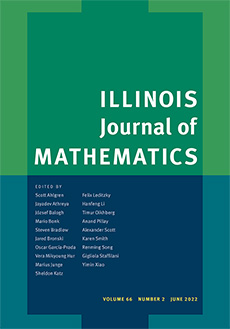Abstract
The Martin boundary theory allows one to describe all positive harmonic functions in an arbitrary domain $E$ of a Euclidean space starting from the functions $k^y(x)=\sfrac{g(x,y)}{g(a,y)}$, where $g(x,y)$ is the Green function of the Laplacian and $a$ is a fixed point of $E$. In two previous papers a similar theory was developed for a class of positive functions on a space of measures. These functions are associated with a superdiffusion $X$ and we call them $X$-harmonic. Denote by $\M_c(E)$ the set of all finite measures $\mu$ supported by compact subsets of $E$. $X$-harmonic functions are functions on $\M_c(E)$ characterized by a mean value property formulated in terms of exit measures of a superdiffusion. Instead of the ratio $\sfrac{g(x,y)}{g(a,y)}$ we use a Radon-Nikodym derivative of the probability distribution of an exit measure of $X$ with respect to the probability distribution of another such measure. The goal of the present note is to find an expression for this derivative.
Citation
E. B. Dynkin. "A note on $X$-harmonic functions." Illinois J. Math. 50 (1-4) 385 - 394, 2006. https://doi.org/10.1215/ijm/1258059479
Information





